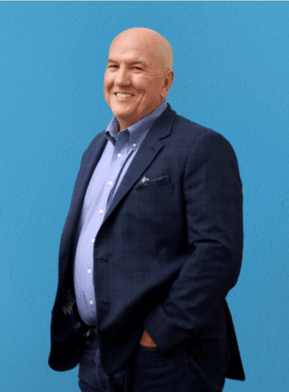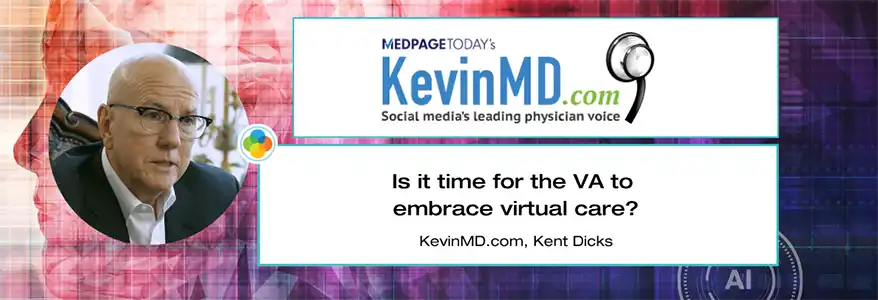Kent E. Dicks, Founder & CEO of Life365, shares his insights on designing patient-centric digital health solutions, accelerating remote care adoption and driving innovation at scale.
According to a report by Aging in Place Technology, the aging population market is expected to grow sharply from $2 billion in 2016 to more than $30 billion in the next few years. Amazon demonstrated interest in health technologies geared towards the aging population, especially when company officials met with AARP several years ago, a lobbying group that supports older Americans, to discuss various collaborations and share research.
How can retailers such as Amazon, Walmart and even Walgreens/CVS make that leap from retailer/pharmacy to doctor-by-your bedside? Technology, especially cost-effective, mobile technologies are key to delivering high quality, cost-effective healthcare according to Arizona-based Life365, a Temple-based mobile health provider. The firm believes that easy-to-use, single-use mobile health technologies can allow big-box retailers such as Amazon, Best Buy, Walmart to fill the void left from hospital closures in rural areas.

To learn more about Life365, we conducted an interview with Kent Dicks, CEO Life365, Inc.
1. Can you tell us more about Life365?
Life365 is a dynamic digital health platform that effectively delivers health care services to the patients wherever they are, solving the interoperability issues from digital health solutions for home to the clinical backend. Life365 is launching a turnkey, faster-to-market platform that integrates software, hardware and services into a single platform. Payers and Providers may significantly lower treatment costs and improve measurable outcomes, from both at-risk and high-risk patients, across multiple acute and chronic conditions. Life365 is nimble and economic. B2B Clients (Payers, Providers, Large Self-Insure Employers, etc.) pay Life365 on a Per Member Per Month (PMPM) basis to provide connected solutions in the patient’s home and feed the data into their clinical backend system.
Life365 is made up of an experienced executive team with previous exits in the healthcare space, including thought leaders in IoT of Healthcare, being acquired by a large publicly traded company, as well as the early commercialization team for Livongo and Alere.
Life365 also has significant patents issued in AI driven wearables / sensors communicating with OEM medical devices and Rapid Diagnostics, sending the data to the cloud / clinical backend, allowing for “Lite” / disposable connected solutions to scale to a broader population of patients in a cost-effective manner.
2. What type of solutions do you provide?
Life365 is uniquely positioned to provide a fully integrated solution at home and beyond, or wherever the patient travels. Life365 uses a single common platform and cloud architecture, to aggregate date from hundreds of connected devices, and turn it into actionable, prioritized information to the clinical backend for the care team.
Life365’s Digital Health Platform provides a variety of solutions, including a wireless tablet / smart phone that communicates to hundreds of devices for home, sending the data to the clinical backend for review and action by healthcare professionals. In addition, Life365 is developing its LifeConnect “Careable” (wearable for healthcare), that brings in multiple sensor data points to be driven thru analytics and AI to make sure the patient is within acceptable limits. The Careable also has the ability to communicate with rapid diagnostics and multi-tests to help facilitate rapid diagnostics moving from the clinical point of care, to the pharmacy bench and retail shelf to home.
3. How do you facilitate the connection between physicians and patients?
With a digital healthcare platform like Life365, valuable, connected insights and analytics will address members’ real needs while achieving the best possible patient satisfaction, patient outcomes and the highest return on healthcare investment. Patients, their physicians, healthcare providers and Medicare are seeking to use a platform that combines predictive analytics, machine learning / AI and blockchain, to deliver the right digital health solutions to broad populations.
Life365 uses a variety of ways to connect with the patient including Tablets, Smart Phones, Cellular Hubs and Smart TVs. Smart TVs give the biggest advantage in getting connectivity inside a seniors home to their healthcare provider. With Smart TVs now coming into the home and cutting the cable cord, OTT boxes (Apple TV, Roku, Amazon Fire, etc.), the need to bring internet connectivity into the home has increased significantly, which gives us the opportunity to connect cost effective thru the TV. The TV also provides a larger format for a senior to view their readings and engage in their care.
4. How can you increase patient engagement?
Life365 is designed to use Artificial Intelligence (AI) to drive its platform to align the right Digital Health solutions with the right patient to achieve the right adherence and quality of care at the right cost. The Life365 AI system, known as Personalyze, also engages the patient in their own care and usage of the digital health solution selected in order to maximize adherence and the extraction of data (biometric, social, behavioral, etc.) to feed Analytic and AI systems in the cloud to help drive down cost across a large population of patients. By providing the proper tools to the patients in the location where they want to embrace their care, giving feedback on their care on a regular basis and potentially providing incentives to participate in their own care as well as providing tools to family caregivers to help in a loved ones care helps to maximize engagement.
5. Who can benefit from Life365?
The US Health care system is in crisis. Skyrocketing costs are driving the implementation of value based care. Trillion dollar market opportunities are emerging in managing costly and complete chronic conditions to proactive health & wellness. Retail, healthcare, distribution and tech companies like Amazon Health, Apple Health, Walmart Health, CVS Health, Walgreens Health and many others are using technology to connect with their members to gain “insights” to improve access to care, drive better outcomes and reduce overall spiralling healthcare costs.
Customers of Life365 will be aligned with synergistic partners to create a more effective healthcare delivery paradigm. Life365 already has exclusive partnerships with American Medical Response (AMR) for navigation, cloud triage, as well as patient monitoring and transportation. Other partnerships include Tytocare for Post Acute Care and Redox for clinical services / EHR integration. Other partners have teamed with Life365 to establish transition of care, including behavioural health, distribution and logistics organizations. Life365 fills the current gap for an easy-to-implement, flexible answer for both large and small Payers and Health Systems.
Life365 is also one of the first participants in the Mayo Clinic / Arizona State University Medtech Accelerator for 2019, with access to the Mayo Clinic eco-system.
6. Why did you join forces with American Medical Response (AMR)?
American Medical Response (AMR) along with some of our other enterprise clients are looking for a way to shift their product offerings as consumers demand to have a connection to healthcare resources based on their terms. Life365 helps AMR to turn the ambulance around, transporting patients always to the ED / Hospital where it is costly, to instead providing fast response teams to home with Nurse Navigators to stabilize the patient, connect with Life365 monitoring equipment and to be monitoring remotely by AMR call centers in all 50 states.
AMR provides the Warm Health component in the Life365 bundled Integrated Health Solution that allows the Life365 clients to provide a cost-effective solution to their patients / members on their terms.
7. Can someone’s home be a point-of-care? How is that?
90% of patients prefer to be at home and not in the hospital. 90% of seniors cannot afford Independent or Assisted Living, so must make their home a place to age with dignity, security with access to proper care. Most health system CEOs are now planning to not spend hundreds of millions of dollars on new hospital campuses, but now see the home as an extension of their health system. Retail drug chains / pharmacists are now preparing to be a cornerstone for delivering and monitoring care within communities, especially in rural areas. New digital health companies are providing cost effective connected solutions for home, connected to monitoring and warm health services.
8. How do you see your industry after 5-years?
The healthcare industry is going thru consolidation right now with retail drug chains converging with large member populations. Consumers are demanding that the point of care being moved closer to them and that tools need to be provided to enable care no matter where the patient is located. In the past Connected Care / Remote Patient Monitoring was expensive and had a high Total Cost of Ownership with large clunky equipment that had large overhead with logistics and refurbishment, which made it only usable with the 5% of patients that consume 50% of healthcare costs. This impeded scaling Remote Patient Monitoring to large populations of patients. In the next 5 years, you will see cost effective bundled sensors that provide multi data points and multi-test rapid diagnostics distributed to home, connected wirelessly / seamlessly to the clinical backend. This will allow scaling to large populations of patients, especially with those not quite incurring large healthcare costs yet. Sensors / Wearables will get their instructions from the cloud / clinical backend and be driven by Artificial Intelligence and the patient’s own patterns and data.
9. What recommendations would you like to give for those willing to enter this industry?
I believe anyone entering the industry today must be solving a problem with a complete solution and not just a single point disparate solution. You need to think about who is going to pay for the solution and how it is going to be distributed and connected to the patient. You must integrate to the clinical backend so that the solution is not out of the clinical workflow for the doctor, but also solve the problem of aligning the right solution to the patient population to create the best ROI, as well as solve the logistics problem (how the patient receives the solution). Wrapping a Warm Health component to have coach / engage the patient in their therapy / solution is a must to drive ultimate success.
This interview has been sponsored by The Bio Connection
Latest Resources
Stay informed with our latest news, resources, and insights!
-1.png)


-1.png)
